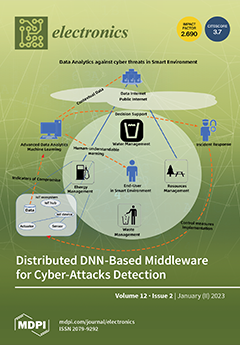In this paper, we analyze the performances of an Enhanced Static Segment Multiplier (ESSM) when the inputs have both uniform and non-uniform distribution. The enhanced segmentation divides the multiplicands into a lower, a middle, and an upper segment. While the middle segment is
[...] Read more.
In this paper, we analyze the performances of an Enhanced Static Segment Multiplier (ESSM) when the inputs have both uniform and non-uniform distribution. The enhanced segmentation divides the multiplicands into a lower, a middle, and an upper segment. While the middle segment is placed at the center of the inputs in other implementations, we seek the optimal position able to minimize the approximation error. To this aim, two design parameters are exploited:
m, defining the size and the accuracy of the multiplier, and
q, defining the position of the middle segment for further accuracy tuning. A hardware implementation is proposed for our generalized ESSM (gESSM), and an analytical model is described, able to find
m and
q which minimize the mean square approximation error. With uniform inputs, the error slightly improves by increasing
q, whereas a large error decrease is observed by properly choosing
q when the inputs are half-normal (with a
NoEB up to 18.5 bits for a 16-bit multiplier). Implementation results in 28 nm CMOS technology are also satisfactory, with area and power reductions up to 71% and 83%. We report image and audio processing applications, showing that gESSM is a suitable candidate in applications with non-uniform inputs.
Full article





